Cobble Beach Classics presents 75 years of Porsche
Below you will find the stories on the 16 cars in the Cobble Beach Classic display. We hope you enjoyed the display

1952 Porsche 356 "Pre A" Coupe
Mike DeJonge
Model Year: 1952
Engine: 4-Cylinder, Air-cooled, Boxer
Displacement: 1,488 cc (1.5 L)
Transmission: 4-Speed Manual
Power Output: 55 hp at 5,000 rpm
Top Speed: 159 km/h
Weight: 748 kg
First series production Porsches, designated Type 356 (the project number), were created by Ferdinand Porsche’s son, Ferry, and built in Gmund, Austria, beginning in the winter of 1948/49. 52 cars were hand constructed from 1948 to 1950, all with fully-aluminum monocoque bodies, designed by Erwin Komenda using modified Volkswagen-based engines.
In 1950, 356 production was transferred to Stuttgart-Zuffenhausen, in Germany, where successive versions featured all-steel bodies, built by Reutter. That design remained relatively stable until 1955, when the 356A was introduced, incorporating multiple changes, including a 1.6-litre engine. 1950-55 models have since been unofficially designated 356 “Pre A”.
This 1952 “Pre A” Coupe, with numbers-matching drivetrain, was among the first to feature a one-piece windshield and a 1.5-litre engine. It has had 10 documented owners, including two in Australia, and has been the subject of a three-year ground-up restoration.
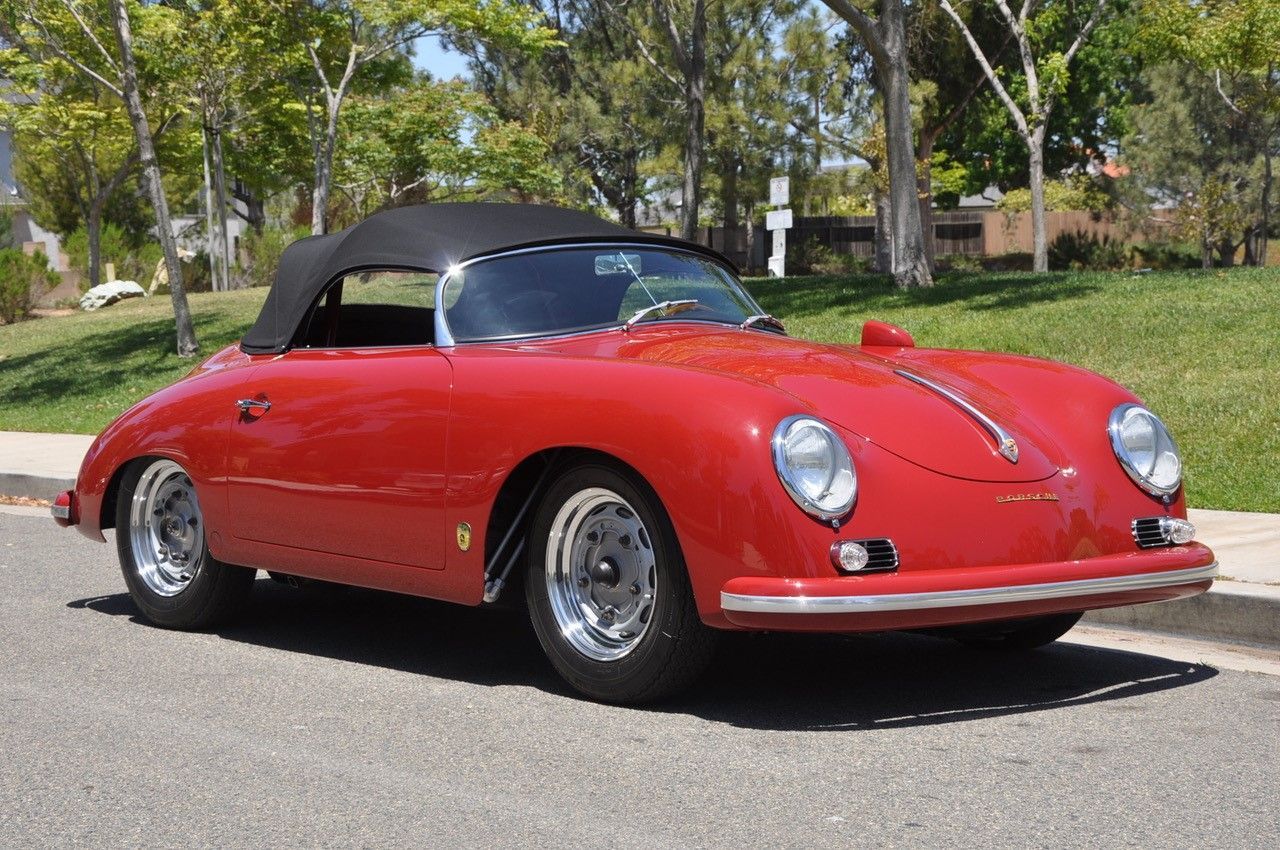
1959 Porsche 356 A Carrera GT Speedster
Jerry Barth
Model Year: 1959
Engine: 4-Cylinder, Air-cooled, Boxer
Displacement: 1,587 cc (1.6 L)
Transmission: 4-Speed Manual
Power Output: 115 hp at 6,500 rpm
Top Speed: 200 km/h
Weight: 865 kg
Renowned New York Porsche importer, Max Hoffman, asked for a stripped-down, low-priced 356 model to compete with the British sports cars of the day. Porsche responded with the 1954 Speedster. A lightweight Cabriolet distinguished by its cut-down, raked and removable windshield, unlined top with side curtains had a spartan, two-seat interior. The 1959 356 A Carrera GT featured alloy body panels and a 1.6-litre, four-overhead-cam, “Fuhrman” 692/3 engine developed for racing. A four-speed manual gearbox was standard. On track, the Carrera was a giant killer, often beating cars with two or three times its displacement.
Only 148 four-cam Speedsters were built. 73 were GT versions, 47 were alloy-bodied. Only 14 featured the 692/3 engine. This car is one of those last 14, making it among the rarest of the rare.
The key slot is on the right side of the steering wheel, a rarity on a Porsche, and unlike the coupe and cabriolet models.
The ultimate version - the 1957 356 A 1500 GS Carrera GT Speedster - was the first production Porsche to reach over 200km/h, or 124mph.
Perhaps Max Hoffman misjudged the American market. As a track car, the Speedster was near ideal, but as a road car, it lacked refinement. It’s cut-down windshield made entry difficult with the top in place, and the side curtains were cumbersome to install (especially in the rain).

1962 Porsche 356 B 1600 Roadster
(Janis Joplin Tribute car)
Vic Rivera
Model Year: 1962
Engine: 4-Cylinder, Air-cooled, Boxer
Displacement: 1,582 cc (1.6 L)
Transmission: 4-Speed Manual
Power Output: 59 hp at 4,500 rpm
Top Speed: 155 km/h
Weight: 870 kg
“My friends all drive Porsches,” sang Janis Joplin, and so did she – a 1964 356 SC Cabriolet that she bought when it was four years old and used as a daily driver. What made her car special, compared to other 356s was its psychedelic paint job, which was as flamboyant as her music and persona.
Joplin is said to have paid her roadie, Dave Richards, $500 to decorate the light ivory car, portraying the “History of the Universe” in every colour of the rainbow. He did, starting with a coat of Candy Apple Red, then adding portraits of Joplin’s “Big Brother and the Holding Company” band-mates and other motifs such as “The Eye of God” on the hood, and a California valley on the right door.
This car is not Joplin’s original, which sold at auction for US$1.76 million in 2015. But it is a similar model, painted as a tribute to that work of art by former GM designer, Nick Moskatow, for its current owner.

1964 Porsche 904 Carrera GTS
Ingram Collection
Model Year: 1964
Engine: 4-Cylinder, Air-cooled, Flat Engine
Displacement: 1,966 cc (2.0 L)
Transmission: 5-Speed Manual
Power Output: 180 hp at 7,000 rpm
Top Speed: 260 km/h
Weight: 655 kg
When Porsche withdrew from Formula 1 racing after the 1962 season, it refocused its efforts on sports car racing, the first result of which was the mid-engined 904. Officially called the Carrera GTS, it made its racing debut at Sebring in 1964, winning its class.
Like the concurrent 911, the beautifully aerodynamic 904 was designed by Ferry Porsche’s son, “Butzi”. As well as adopting a new, fully independent suspension, it incorporated a novel construction technique with fibreglass body panels bonded to a pressed-steel ladder frame, to expedite production of the 100 vehicles needed to qualify for GT-class racing.
Designed around the new 911’s flat-six engine, because of supply issues almost all 904s were powered by an updated version of the proven 2.0-litre, four-cam, flat four inherited from the RSK (718). To say it was successful would be gross understatement as the 904 racked up race wins all over the world, including a class win in Canada.
This specific example was awarded first in class at Pebble Beach Concours d’Elegance, one of the most prestigious car events in the world.
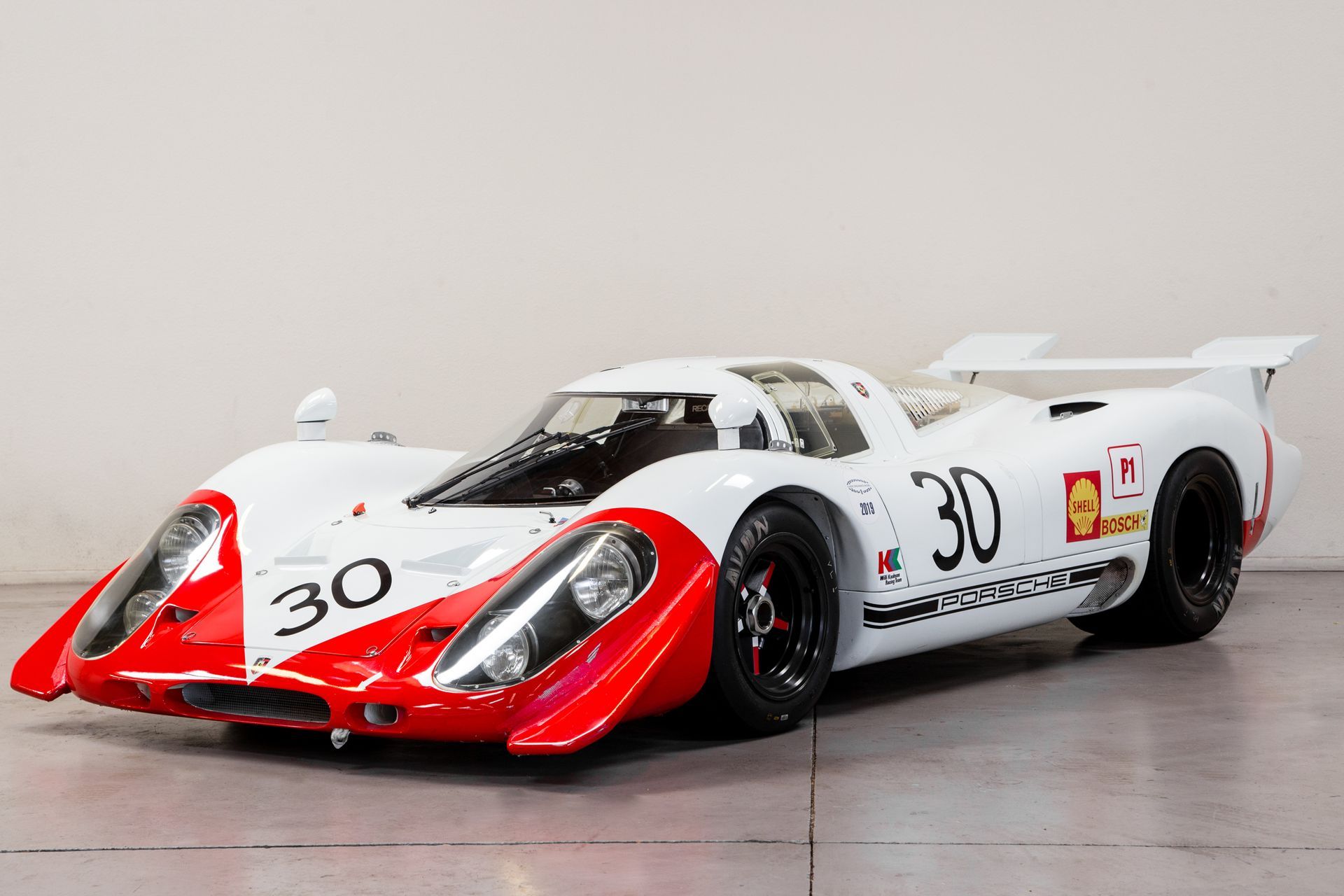
1969 Porsche 917 LH (Long-Tail)
Chassis 005
David Seabrooke
Model Year: 1969
Engine: 12-Cylinder, Air-cooled, Flat Engine
Displacement: 4,494 cc (4.5 L)
Transmission: 5-Speed Manual
Power Output: 512 hp at 8,000 rpm
Top Speed: 320 km/h
Weight: 830 kg
Developed under the leadership of Ferdinand Piëch, the Type 917 ushered in a new era of Porsche racing. The first official race for the 917 would be the 1000 km race at Spa in 1969. Porsche showed up with Chassis 917-003 (#31) and Chassis 917-005 (#30). Joe Siffert was chosen to test and qualify Chassis 005 which he did on the pole. In its first race the car showed incredible speed by capturing the pole at one of the most historic tracks in the world. Siffert chose to race the 908 as it was considered the more reliable car. Mitter started 005 on the pole but didn’t finish while Joe Siffert and Brian Redmond went on to win the race with the 908. Apparently. Mitter caught 3rd gear instead of 5th and blew the engine. Chassis 005 was the first 917 to be raced. It captured the pole! The real test of this new car would be at Le Mans on June 14/15, 1969.
After the Spa race Porsche 917-005 was sold and delivered at LeMans to John Woolfe a British privateer race driver. For the 1968 season Woolfe had acquired a Lola T70 Mk3 GT and a Chevron B12. A McLaren M6B followed for 1969 and when Porsche revealed their plans for a customer 917 John jumped at the chance and purchased 917-005.
Practice was not without incident. Woolfe blew the engine when he grabbed first instead of third, but Porsche was able to provide a replacement. Meanwhile, after just two laps Martland struck a crash barrier coming onto the Mulsanne Straight. Although the damage was slight, he conceded the 917 was too much of a handful and wisely told John Woolfe he didn’t want to drive it. Porsche supplied Herbert Linge to co-drive and Rolf Stommelen qualified the car ninth.
Deciding to drive the opening stint himself Woolfe dashed across the track, jumped into 005 and took off at great speed without fastening his seatbelt. Swept along by faster drivers, Woolfe lost the 917 on the opening lap coming over the hump through the kink before Maison Blanche. Getting two wheels on the grass at over 150mph the car slid wide and Woolfe couldn’t catch it. The 917 hit the guard rail, flipped onto its roof and continued down the road before breaking in two and catching fire. The track was completely blocked with burning wreckage. Poor John Woolfe was thrown from the car and died in the helicopter as he was rushed to hospital.
The remains of chassis 005 were shipped back to Porsche where they sat under a tarp at Work 1 for many years. The car and its remains were the property of John Woolfe Racing until purchased by David Seabrooke.
In the late 1980s Willi Kauhsen purchased a pair of accident damaged 956s from the Porsche factory along with a large quantity of 917 spares including the remains of chassis 005. In January 2012 the rights to rebuild chassis 005 were acquired from David Riswick the owner and former partner of John Woolfe. He was very interested in seeing the car restored and the memory of John Woolfe restored as a true gentleman driver.
David bought the car and contacted his good friend Willi Kauhsen, the long time Porsche factory driver during the 908 and 917 era having himself raced at Le Mans many times including 1970 in the Hippy car and the pink Pig in 1971.
Searching for all of the original parts, David enlisted Willi, his long-time friend, as his partner, to undertake this very special restoration project. The goal was the faithful restoration of 005 but also to honor John Woolfe who represented the best of the privateer gentlemen drivers.
Willi because of his relationship with Porsche was able to enlist the support of Porsche in this restoration. All driver development work was conducted by Derek Bell at Valencia under the leadership of Norbert Singer and Willi.
Now restored to its former glory, 005 represents the only original longtail version of the 917 in privateer hands. It is race ready with an FIA passport.

1970 Porsche 911 ST Lightweight
Jacques Rivard
Model Year: 1970
Engine: 6-Cylinder, Air-cooled, Boxer
Displacement: 2,247 cc (2.3 L)
Transmission: 5-Speed Manual
Power Output: 250 hp at 6,200 rpm
Through the 1960s, Porsche focused most of its competition efforts on pure race cars. However, when the FIA created a new Group 4 Special GT class for production sports cars in 1970, Porsche responded with a lightweight 911S referred to internally as ST.
Along with deleting most of the 911S’ trim and comfort items, it featured a wider track, thinner steel for the roof and inner structure, aluminum bumpers, door panels and engine lid, fibreglass front and rear fascias and front lid. plexiglas windows, and roll-bar and seatbelt mounts. In their initial form, the STs were powered by a 250 horsepower, 2.3-litre engine, similar to those in the 906 and 908 race cars.
Only 33 STs are known to have been built. This one was purchased by its current owner in 2013 with its true identity unknown. That identity was subsequently determined and it has since undergone a painstaking restoration to its rare original form.
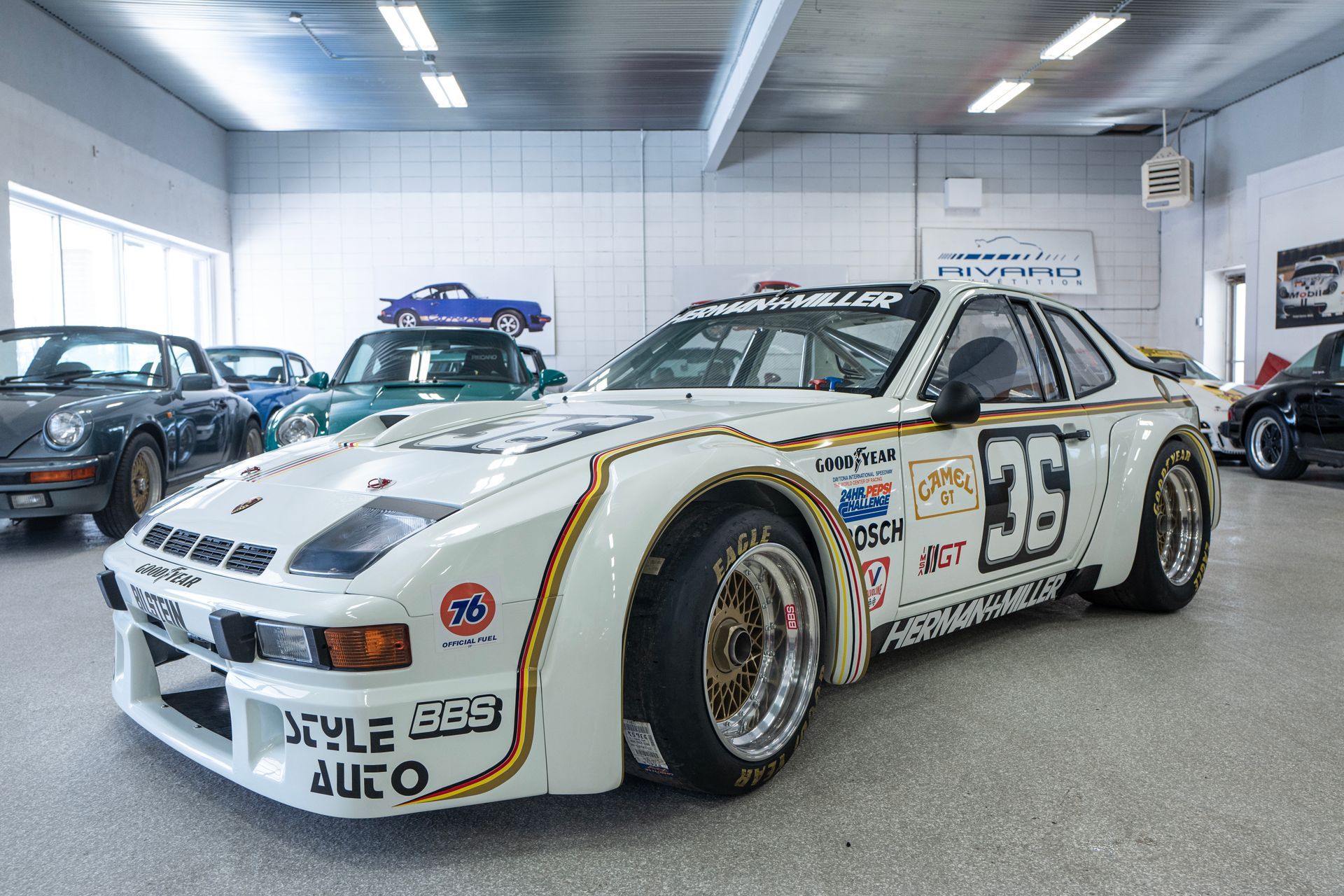
1981 Porsche 924 GTR
Olivier Rivard
Model Year: 1981
Engine: 4-Cylinder, Turbo, In-line Engine
Displacement: 1,984 cc (2.0 L)
Transmission: 5-Speed Manual
Power Output: 375 hp at 6,500 rpm
Top Speed: 290 km/h
Weight: 930 kg
Porsche introduced the 924 in 1976 as the successor to the 914/916. It was the first Porsche to be powered by a water-cooled engine – shared with the Audi 100 – and the first with its engine mounted in front, driving the rear axle through a transaxle. While it was a complete break with Porsche tradition, it was well engineered, well accepted, and highly profitable. Although not exotic in appearance, its design prompted several imitators.
Being a Porsche, it also spawned a succession of performance and racing variants. A 924 Turbo production model was introduced in 1979, followed by a 924 Carrera GT, then a GTR racing version destined for Le Mans. The GTR’s turbocharged 2.0-litre engine generated 375 horsepower, propelling it to 290 km/h (180 mph).
This car is number two of 17 GTRs built and the first customer car. It was raced in the 1981 Daytona 24-hour race and subsequently by Ludwig Heimrath ( a successful Canadian racer) in IMSA and Trans Am races.

1984 Porsche 928 S
Josip Curkovic
Model Year: 1984
Engine: 8-Cylinder, V-Engine
Displacement: 4,664 cc (4.7 L)
Transmission: 4-Speed Automatic
Power Output: 234 hp at 5,500 rpm
Top Speed: 235 km/h
Weight: 1,450 kg
Introduced at the Geneva Motor Show in 1977, the Porsche 928 was the new flagship of the brand. With a front-mounted, water-cooled 4.5-litre engine driving the rear wheels, it seemed very un-Porsche-like but it was the very first production model to be all-Porsche in design and engineering, with no Volkswagen heritage. Its unique styling featured large-radius curves on all surfaces and not a sharp edge anywhere.
Aimed at a different market than the 911, the 928 was inherently more luxury than performance-oriented. In 1979, however, the 928S was added to the lineup, featuring a 4.7-litre engine that boosted power from 240 to 300 horsepower, bringing performance into true Porsche territory, with a top speed of 240 km/h (150 mph). Visually, it was more sporting as well, adding discreet front and rear spoilers and more aerodynamic wheels.
The North American specification 928 S used, among other differences, smaller valves, milder camshafts, smaller diameter intake manifolds and additional pollution equipment in order to meet emissions regulations, and was limited to 234 hp and 235 km/h top speed as a result.
This car was originally purchased by the owner of “Sam The Record Man” (Ottawa) and it has been in the current owner’s family since 1986.
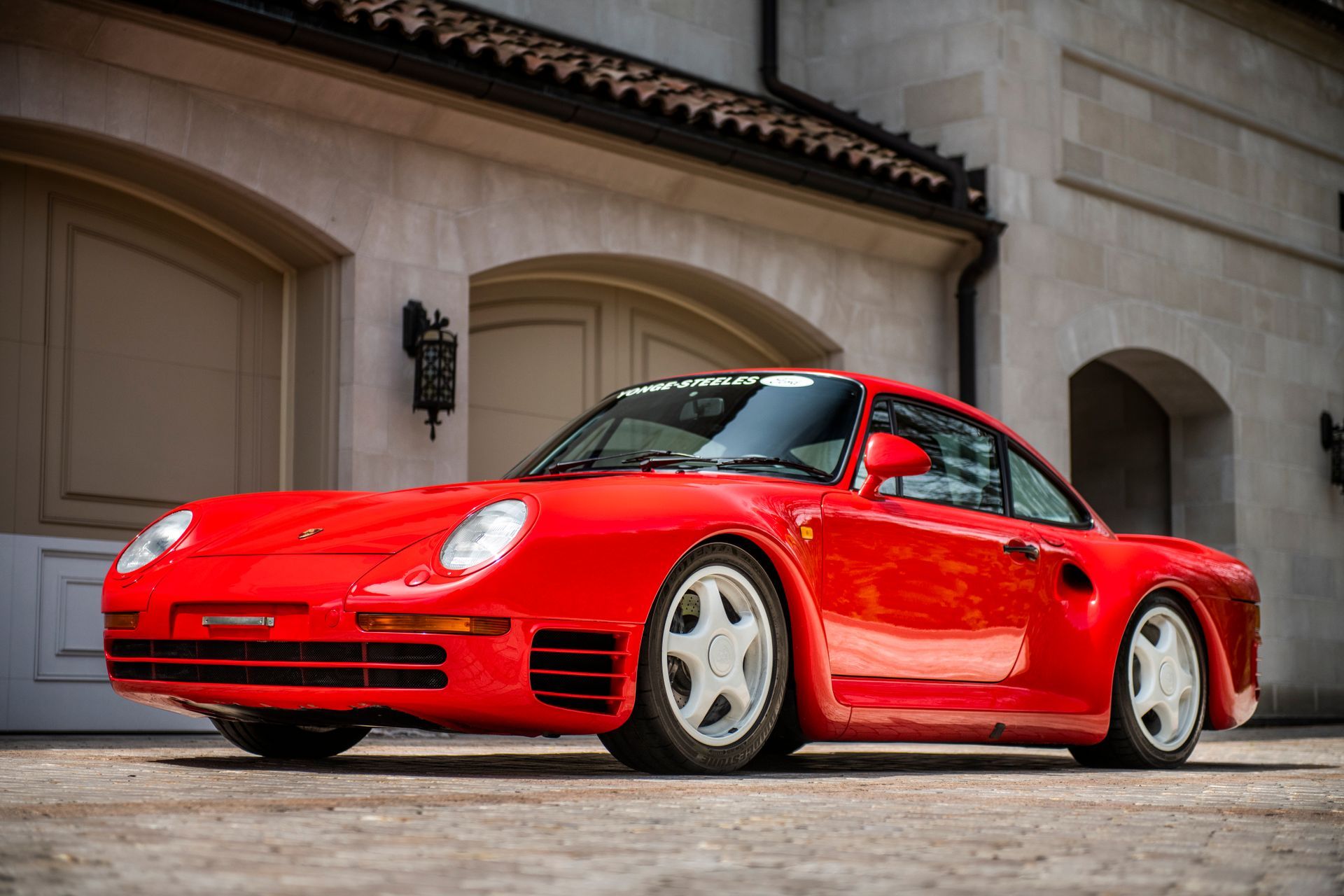
1987 Porsche 959 Komfort
YSFL Private Collection
Model Year: 1987
Engine: 6-cylinder, Biturbo, Boxer
Displacement: 2,848 cc (2.85 L)
Transmission: 6-Speed manual
Power Output: 443 hp at 6,500 rpm
Top Speed: 315 km/h
Weight: 1,450 kg
Considered to be the ultimate Porsche 911 at the time, the 959 made its debut as a Group B rally/race car concept at the 1983 Frankfurt Auto Show. Subsequent development prototypes took 1st and 2nd place at the Paris-Dakar Rally in 1986, proving the concept. Production began in 1986, with the first road-going “Komfort” models delivered to customers in 1987. With sophisticated engineering and aerodynamically optimized bodywork that paved the way for Porsches to come, the 959 demonstrated the cutting edge of automotive design.
A combination of aluminum and Kevlar composite comprised the 959’s body and chassis construction and it was powered by a 2.85-litre, sequential twin-turbo, flat-six engine that developed 443 horsepower and featured air-cooled cylinders with water-cooled heads. Even more impressive was its electronically-controlled chassis and all-wheel drive system that could dynamically change the torque distribution between the front and rear wheels.
Production of the 959 concluded in 1989, with a total of 321 vehicles built. At least 6 more were constructed from parts in 1992 under special order.

1988 Porsche 911 (930S) Turbo Slantnose
William Halkiw
Model Year: 1988
Engine: 6-Cylinder, Turbo, Air-cooled, Boxer
Displacement: 3,299 cc (3.3 L)
Transmission: 4-Speed Manual
Power Output: 330 hp at 5,750 rpm
Top Speed: 252 km/h
Weight: 1,350 kg
Porsche introduced the iconic 911 Turbo (internal designation 930) in 1974, as a low-volume homologation special to qualify it for 1976 racing regulations. However it became hugely successful as a production model and that generation continued to be built in various iterations through 1989. Easily identified by its wide fender flares and whale-tail spoiler, it was powered initially by a 3.0-litre, fuel-injected engine employing technology originally developed for the 917/30 Can-Am car.
A subsequent pure racing version (935) featured a slant nose (flat nose) front end, to improve aerodynamics and, the German Kremer racing team began selling slant nose conversion kits. In response to that obvious enthusiast demand, Porsche offered a special-order flachbau (flat nose) production model from 1987. As it was substantially hand-crafted, its resulting high price limited production to 948 units.
This 1988 example, with its 330 horsepower, 3.3-litre engine, is highly original, including the paint and interior, verified by a Porsche Certificate of Authenticity.
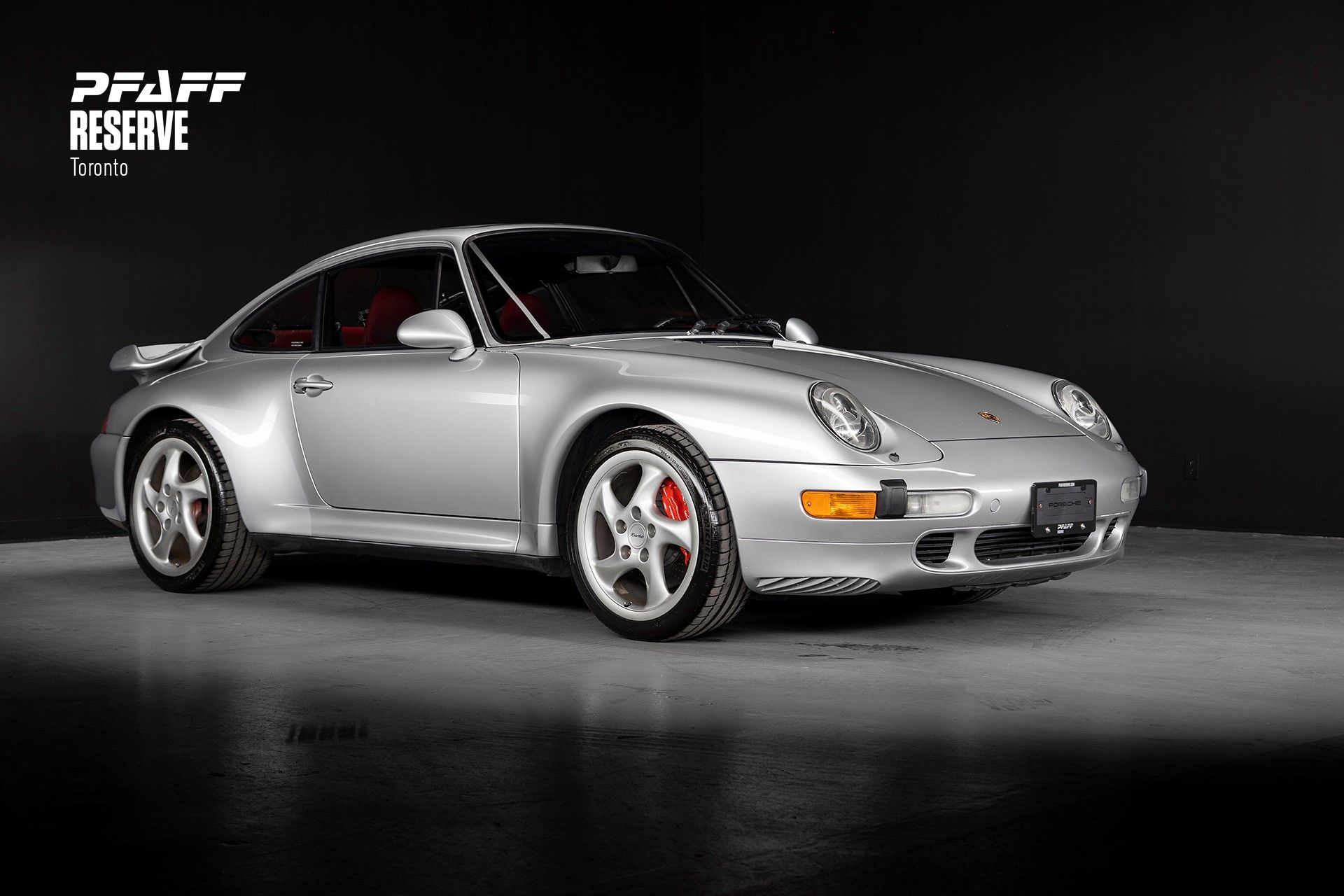
1996 Porsche 911 (993) Turbo
Pfaff Reserve
Model Year: 1996
Engine: 6-cylinder, Biturbo, Air-cooled, Boxer
Displacement: 3,600 cc (3.6 L)
Transmission: 6-Speed manual
Power Output: 402 hp at 5,750 rpm
Top Speed: 290 km/h
Weight: 1,500 kg
The 4th -generation Porsche 911 (internal designation 993), which was built for model years 1994 to 1998, was the last of the air-cooled 911s. In addition to new bodywork, with more-flared wheel arches and smoother front and rear-end designs, it featured an all-new multi-link suspension that mitigated the 911’s inherent lift-off oversteer tendencies, making the car more civilized in everyday use.
The 993 Turbo model, introduced for 1996, was in fact Porsche’s first production twin-turbo, with one small turbocharger for each cylinder bank and air-to-air intake intercoolers mounted in the traditional Turbo whale-tail. That combination boosted the 3.6-litre Turbo engine’s output to 402 horsepower, which was delivered through the 911’s first six-speed manual transmission to all four-wheels – another 911 first, using an AWD system derived from the iconic 959.
The 993 generation is often referred to as the best and most desirable of the 911 series because of its combination of beauty and great performance, even by modern standards.
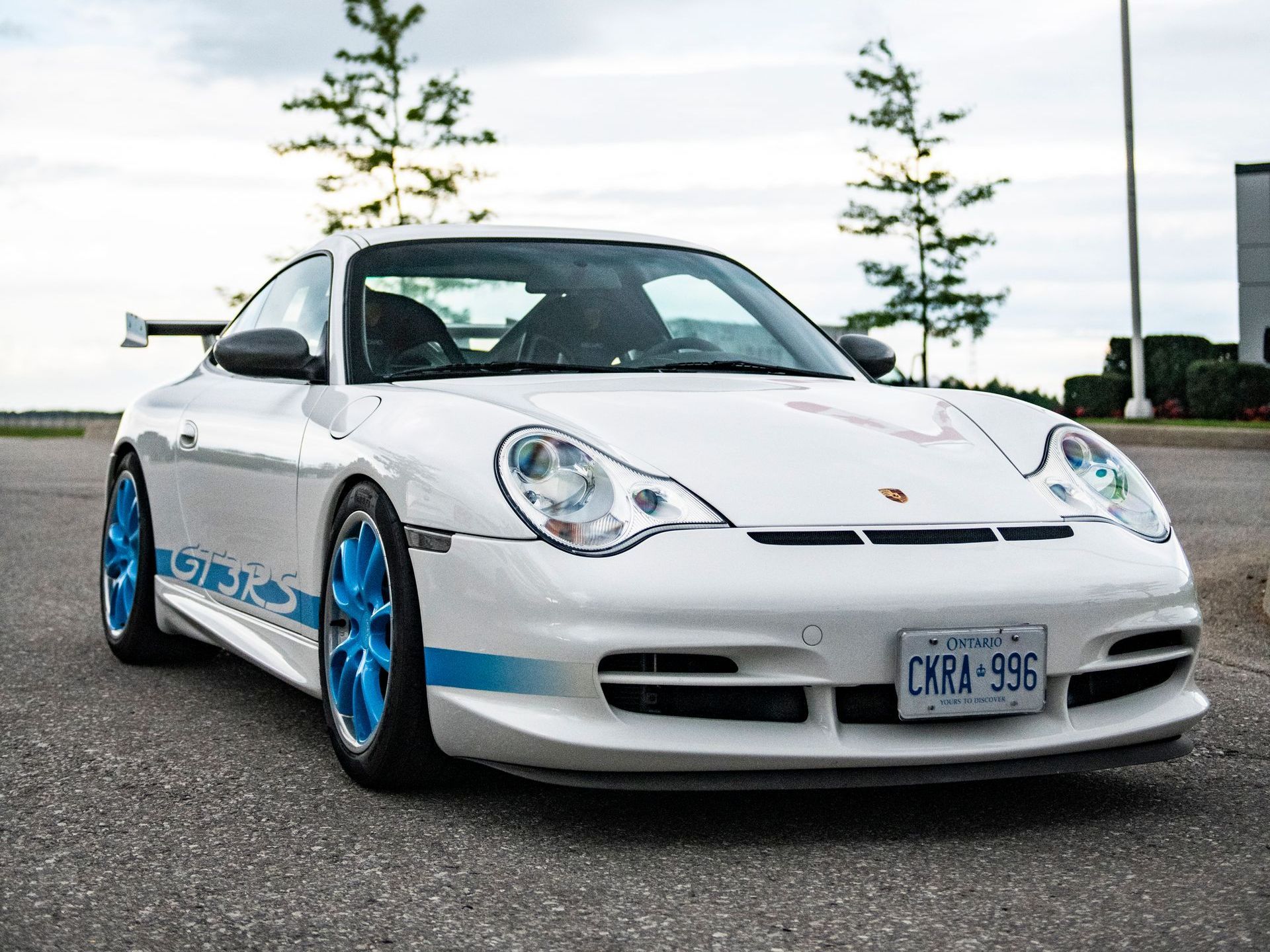
2004 Porsche 911 (996) GT3 RS
Anthony Wong
Model Year: 2004
Engine: 6-cylinder, Boxer
Displacement: 3,600 cc (3.6 L)
Transmission: 6-Speed Manual
Power Output: 381 hp at 7,300 rpm
Top Speed: 306 km/h
Weight: 1,360 kg
The fifth-generation 911 (internal designation 996), introduced for model year 1998 and produced through 2004, was the first to employ a water-cooled engine. Distinctly styled, it is readily identified by its L-shaped headlamps. A competition-oriented but road-legal GT3 model, with a high-performance, normally-aspirated 3.6-litre engine, arrived a year later.
The GT3 RS, adopting the historic RennSport (RS) designation of the 1972 Carrera RS 2.7, was a lightweight “homologation special” built to satisfy new GT racing rules for 2004. As such, it was a dedicated track car, with occasional road-going capability. Fewer than 1,000 were built and it was never sold officially for road use in North America.
Powered by a 381-horsepower “Mezger” engine with an 8,200 redline, its design focus was to maximize the power-to-weight ratio. Specific features included a polycarbonate rear window, carbon-fibre hood and rear wing, 90-litre fuel tank, and track-optimized, fully-adjustable adjustable suspension.

2006 Porsche Carrera GT
Brad Kyle
Model Year: 2006
Engine: 10-cylinder, V-Engine
Displacement: 5,733 cc (5.7 L)
Transmission: 6-Speed Manual
Power Output: 603 hp at 8,000 rpm
Top Speed: 330 km/h
Weight: 1,380 kg
Built from 2003 to 2006, the Porsche Carrera GT was a street-legal, production supercar, developed from a stillborn Le Mans race car, that pushed the technological boundaries of the day. The GT’s race-car heritage was evidenced by its mid-mounted engine layout, full carbon-fibre monocoque construction and double-wishbone suspension at all four corners, with pushrod-actuated inboard springs and dampers.
Despite those race-car roots, the Carrera GT was designed and engineered to be a civilized road car. Vehicle appointments included a luxuriously trimmed interior, Targa-style roof as well as a carbon-fibre rear subframe, which was hydraulically-mounted to the monocoque to isolate the cockpit from noise and vibration. It’s rear wing extended at speeds above 113 km/h (70 mph).
The GT was powered by a 5.7-litre, DOHC V-10 engine, with an output of 603 horsepower that propelled it to an official top speed of 330 km/h (205 mph). Only 1270 units were produced in the GT’s brief run, 14 of which initially came to Canada.

2015 Porsche 918 Spyder
Maria Ruta
Model Year: 2015
Engine: 8-Cylinder, V-engine Paired to 2 Electric Motors
Displacement: 4,593 cc (4.6 L)
Transmission: 7-Speed PDK
Power Output: 887 hp (combined) at 8,600 rpm
Top Speed: 344 km/h
Weight: 1,675 kg
The exotic, mid-engined Porsche 918 Spyder made its debut as a concept car at the 2010 Geneva Motor Show and began limited production three years later. As the brand’s flagship roadgoing supercar, it was in effect the successor to the Carrera GT. It was also the first hybrid supercar, establishing a trend followed by other manufacturers.
Primary power came from a race-bred 4.6-litre V-8 engine, with its exhaust exiting on top between the cylinder heads, right behind the occupants’ heads. That powerplant was aided by two electric motors, one of which served as a generator and drove the rear wheels, while the other drove the front wheels. The combined output from all three was 887 horsepower – sufficient to achieve a top speed of 344 km/h (214 mph).
Matching its numeric designation, Porsche built a total of 918 Spyders during its 21-month production run. Although that production extended from 2013 to 2015, all 918 Spyders were identified as 2015 models.
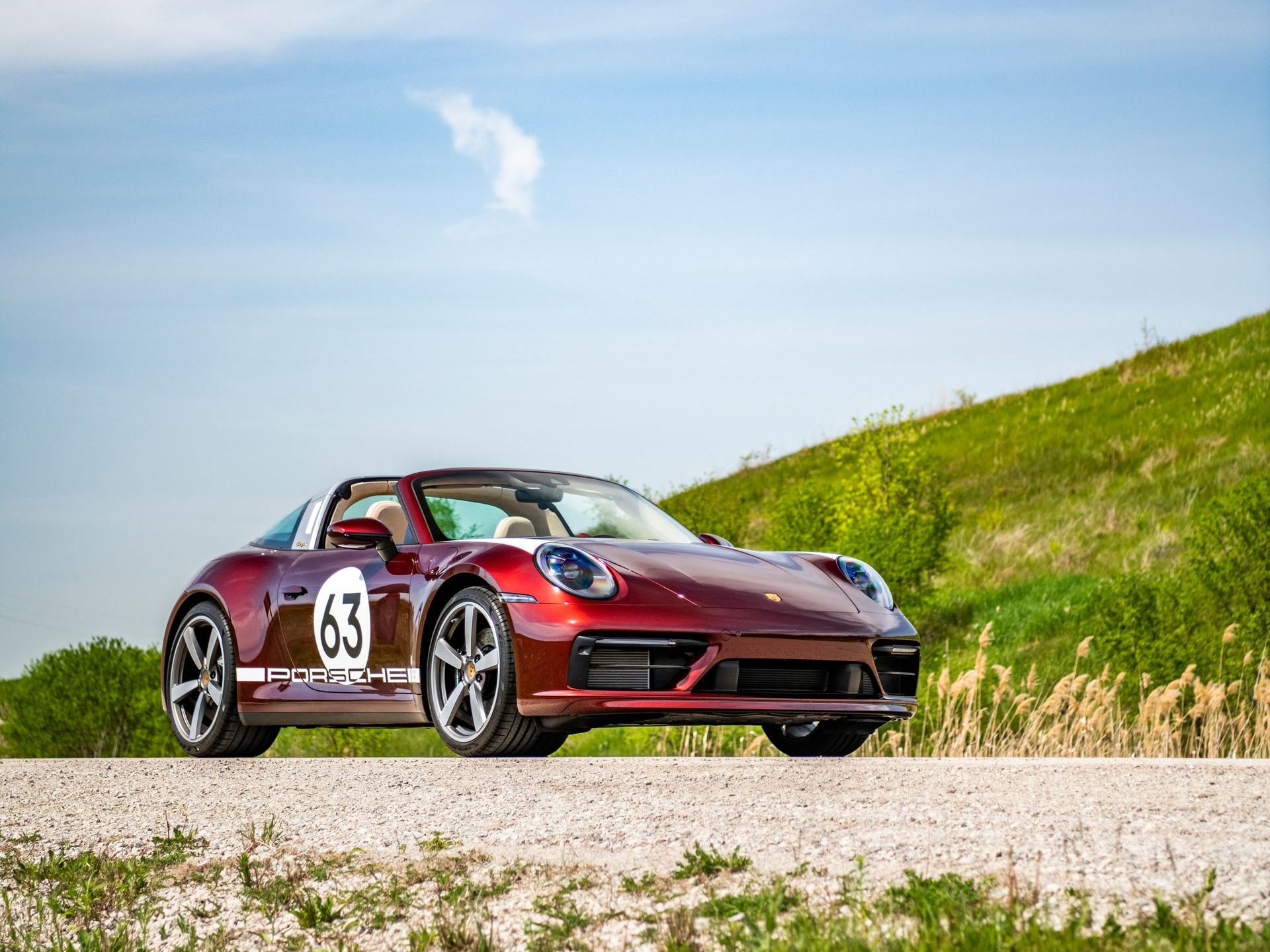
2021 Porsche 911 Targa 4S Heritage Design Edition
Rene Monaro
Model Year: 2021
Engine: 6-Cylinder, Biturbo, Boxer
Displacement: 2,981 cc (3.0 L)
Transmission: 8-Speed PDK
Power Output: 443 hp at 6,500 rpm
Top Speed: 304 km/h
Weight: 1,672 kg
More acutely aware of its heritage than most automakers, Porsche has established a Heritage Design strategy to bring back some of the brand’s design features, colours and materials of the 50s, 60s, 70s and 80s. Highlighting that strategy, Porsche has committed to showcase each of those eras by producing limited-edition collector models.
The first of those collector models is the 911 Targa 4S Heritage Design Edition, with production of just 992 vehicles for Model Year 2021. In addition to a modern interpretation of the classic Targa body style, obvious throwback design features include an optional race start number on the doors as well as motorsport graphics on the front fenders and Porsche lettering on the sides, reminiscent of race variants of earlier models.
The Heritage Design Edition boasts multiple other nostalgic details. The analogue rev counter with white markings and green numbers pays tribute to the legendary 356. The two-tone leather interior is complimented with surfaces in elegant Atacama Beige corduroy. These features invoke the spirit and fashion of the 1950s, making the Heritage Edition an icon of modern cool.
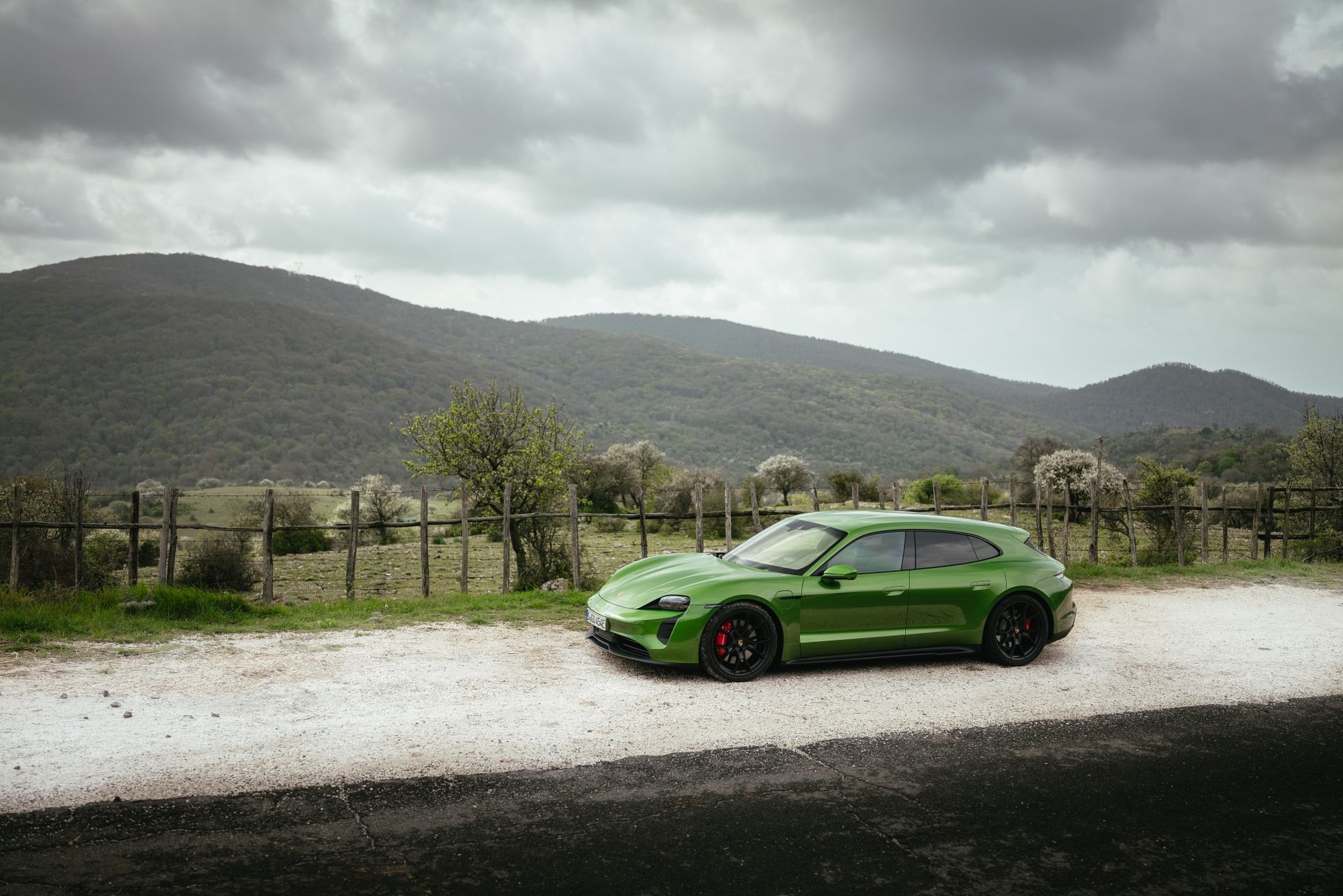
2022 Porsche Taycan GTS Sport Turismo
Model Year: 2022
Motor: Permanent Magnet Synchronous Electric Motors (one per axle)
Transmission: Single-speed (front axle), Two-speed (rear axle)
Power Output: 509 hp (590 hp with Launch Control Overboost Power)
Top Speed: 250 km/h
Weight: 2,875 kg
Based on the Mission E Concept shown at the Frankfurt Motor Show in 2015, the production version of the Porsche Taycan made its public debut at the 2019 Frankfurt Show. As Porsche’s first fully-electric vehicle, it broke new ground and earned critical acclaim, winning multiple awards, including the World Luxury Car and World Performance Car titles for 2020.
Its initial fastback sedan body-style was soon joined by two crossover/wagon variants called Cross Turismo and Sport Turismo. The GTS (Gran Turismo Sport) trim level was added for 2022, featuring a range of enhancements that include a peak overboost power output of 590 horsepower with launch control. All Taycans sold in Canada feature an 800-volt Lithium-ion battery pack (which can charge the battery from 5% to 80% in as fast as 22.5 minutes) that feeds two electric motors – one driving each axle to provide dynamically adjustable all-wheel-drive.
GTS models, like this one, feature unique exterior design elements, including carbon-fibre inlays and black trim details, as well as distinctive interior detailing and GTS-specific chassis tuning.
Ever since the creation of the Porsche 904 Carrera GTS in 1963, these three letters have held special significance for Porsche fans. Now, there is a derivative with this legendary letter combination in every Porsche model series.


